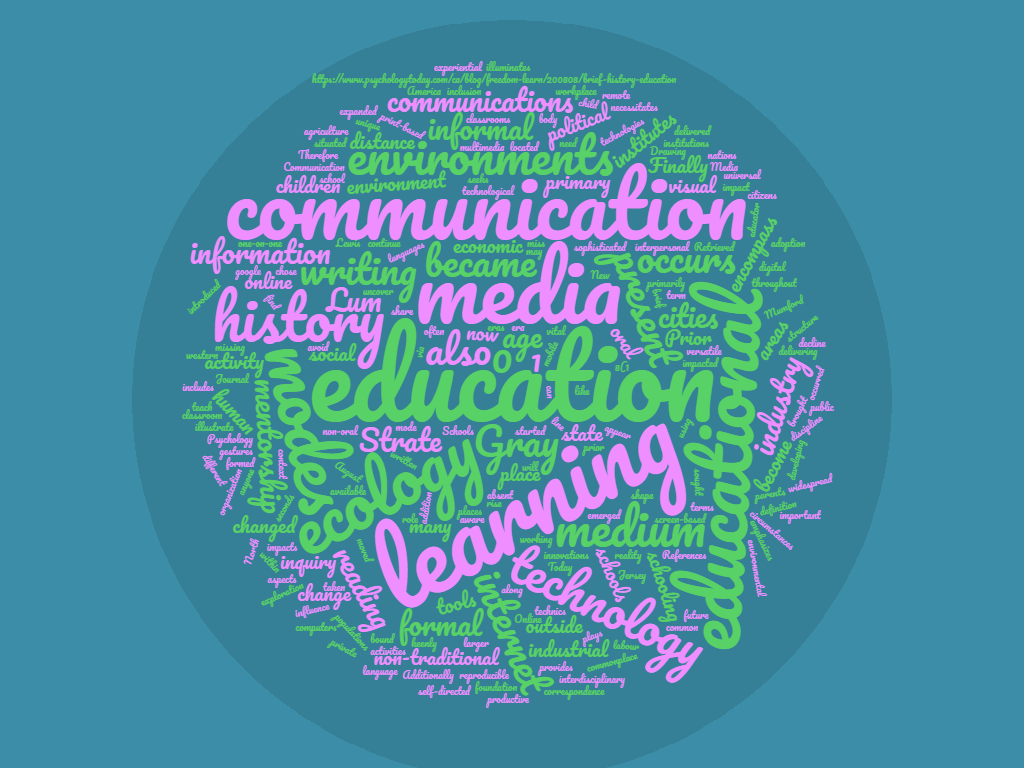
The wordcloud is a visual depiction of the contents of this post.
Media ecology is an interdisciplinary line of inquiry that emphasizes the influence media, communications, technology and environments have on each other and how they impact the structure, organization, and place of social, economic, and political activities. By viewing media as environments, media ecology seeks to encompass the history, present state, and future of technology, media, and communications to uncover less obvious aspects of human activity (Strate & Lum, 2000). Critical to this line of thinking is the analysis of how the affordances and biases of media and technology shape the environments in which we construct our understanding of the world (Lum, 2000). While environments are the containers where media and technology live and evolve, media ecology stretches the idea of environment into media. As de Castell, Droumeva, & Jenson state “If media ecology is the study of media as environments, then media ecology may also legitimately extend to the study of environments as media” (2014, p. 76).
An educational media ecology applies the idea of media as environments and environments as media to the context of education. As de Castell, Droumeva, & Jenson illustrate with the idea of “building as interface”, the environment can be both a noun and a verb (2014). As a noun, the environment is a thing, a building or structure, but as a verb, it is transformed into a medium (de Castell, Droumeva, & Jenson, 2014). While this notion may seem particularly abstract, the dual existences of media and environments help dissect the pedagogical selections we make as educators. As we make selections, we are not only shaping educational environments, but we are also shaping the medium of education. Each of our selections biases and affords different ways of knowing, being, and communicating. Examining our selections from an educational media ecology perspective allows us to uncover elements and biases of media, technology, and environments that we have taken for granted and impact ways of knowing, being, and communicating in educational spaces. As technologies, media, and environments evolve, they do not do so in isolation. Rather, an educational media ecology perspective asks us to analyze how these elements interact and transform each other. Instead of learning theories that focus on how learning happens, educational media ecology draws attention to the ways media and environments afford, enable, or distract ways of knowing, being, and communicating in educational spaces.
References
de Castell, S., Droumeva, M. & Jenson, J. (2014). Building as interface: Sustainable educational ecologies. MedienPädagogik, 24, 75-91.
Gray, P. (2008, August 20). A brief history of education. Psychology Today. Retrieved from https://www.psychologytoday.com/ca/blog/freedom-learn/200808/brief-history-education.
Strate, L. & Lum, C. (2000) Lewis Mumford and the ecology of technics. New Jersey Journal of Communication, 8(1), 56-78.